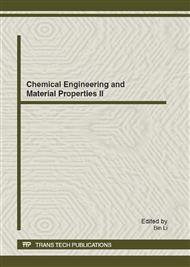p.30
p.36
p.41
p.45
p.50
p.54
p.60
p.65
p.70
Use of CAS Colorimetric Assays to Evaluate the Effect of Copper Ion on Methanobactin Production by Methylosinus trichosporium 3011
Abstract:
Methanobactin (mb) is a small copper-binding chromopeptide produced by methanotrophs. In this paper, a quantitative assay method for the content of mb was developed. The mb produced by Methylosinus trichosporium 3011growth with methane and methanol as carbon sources were detected from the culture supernatants by the CAS colorimetric assay at wavelengths 605 nm. The aim of this study was to evaluate the effect of copper ion on mb production by methane-growth and methanol-growth Methylosinus trichosporium 3011. The results of our experiments prove that Methylosinus trichosporium 3011 is able to utilize methanol as sole source of carbon and energy to produce mb. Cells grown on both methane and methanol exhibited differences in the accumulations of mb which were dependent on the concentration of copper (Ⅱ) present in the growth medium. An increase in the concentration of copper (Ⅱ) in the growth medium decreased mb content in the supernatant solutions. However, the mb was shown to exhibit maximal concentration at 0.5µmol/L copper (Ⅱ) with methanol as carbon source in contrast to the mb from cells grown on methane which as maximum concentration at 0 µmol/L copper (Ⅱ).
Info:
Periodical:
Pages:
50-53
Citation:
Online since:
July 2012
Authors:
Keywords:
Price:
Сopyright:
© 2012 Trans Tech Publications Ltd. All Rights Reserved
Share:
Citation:


